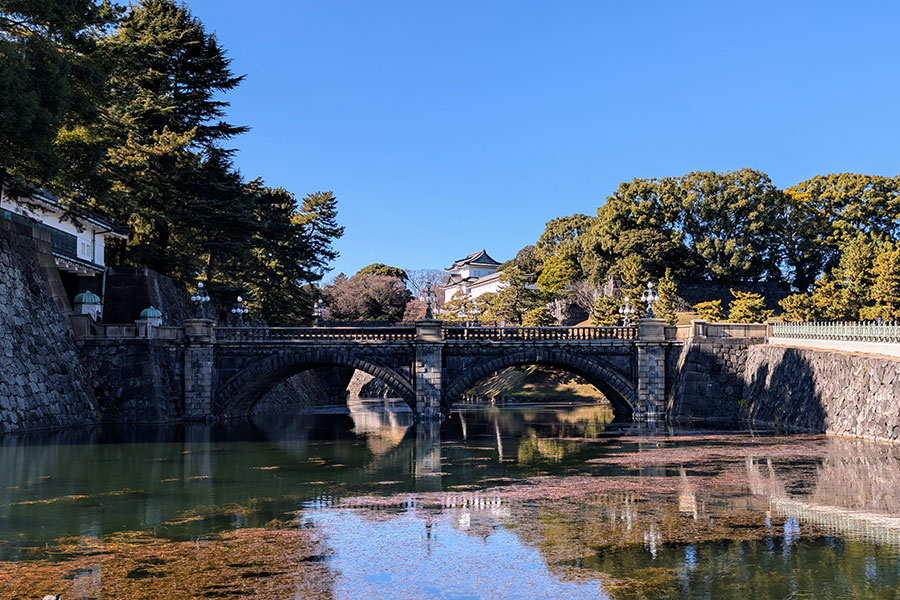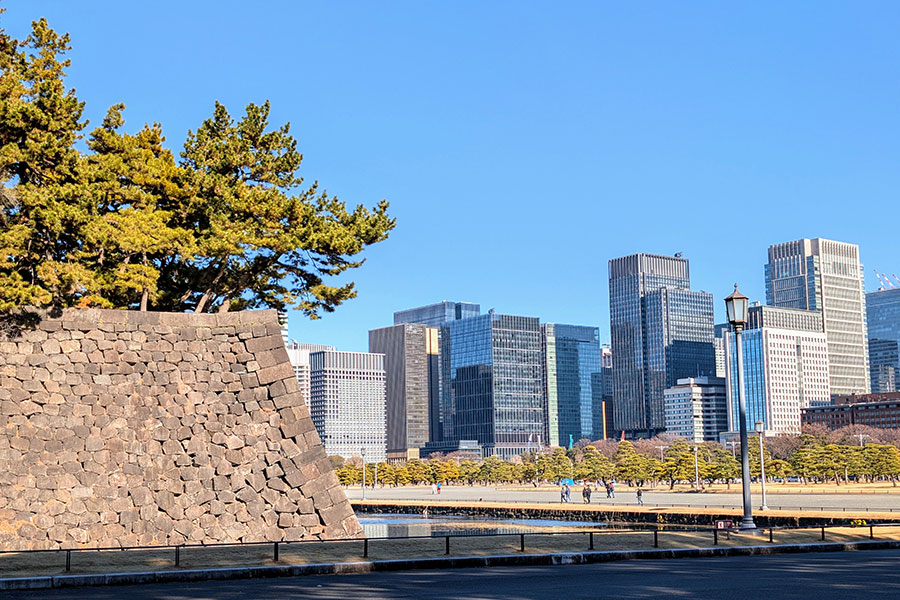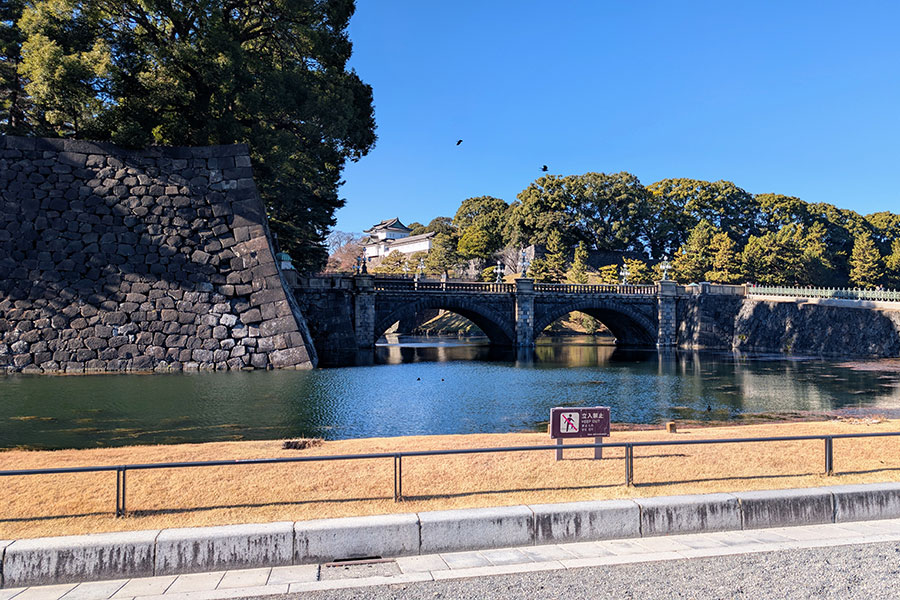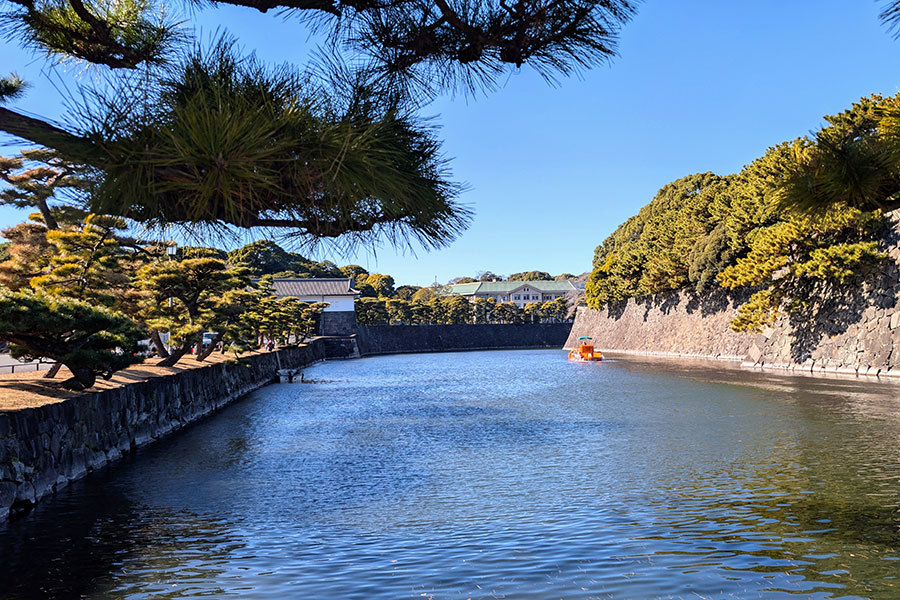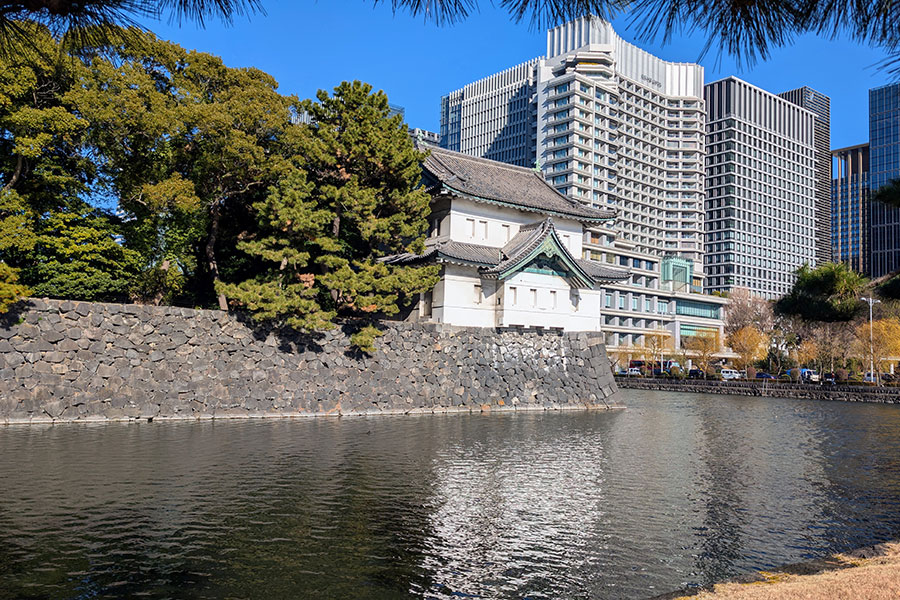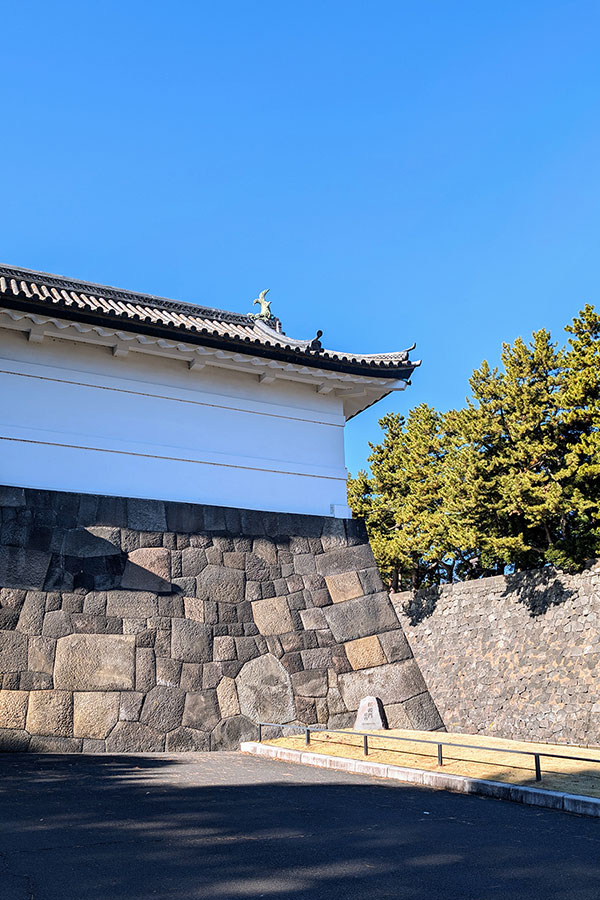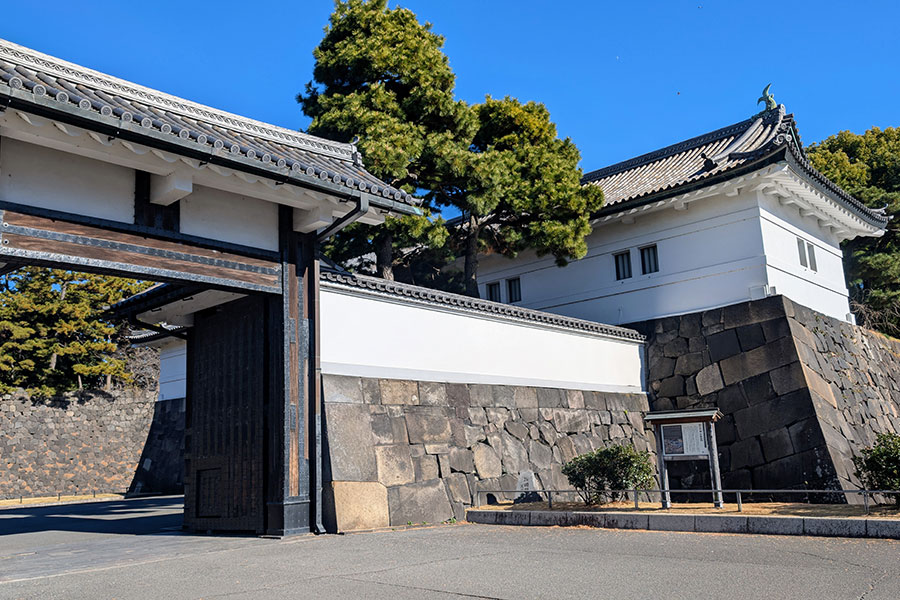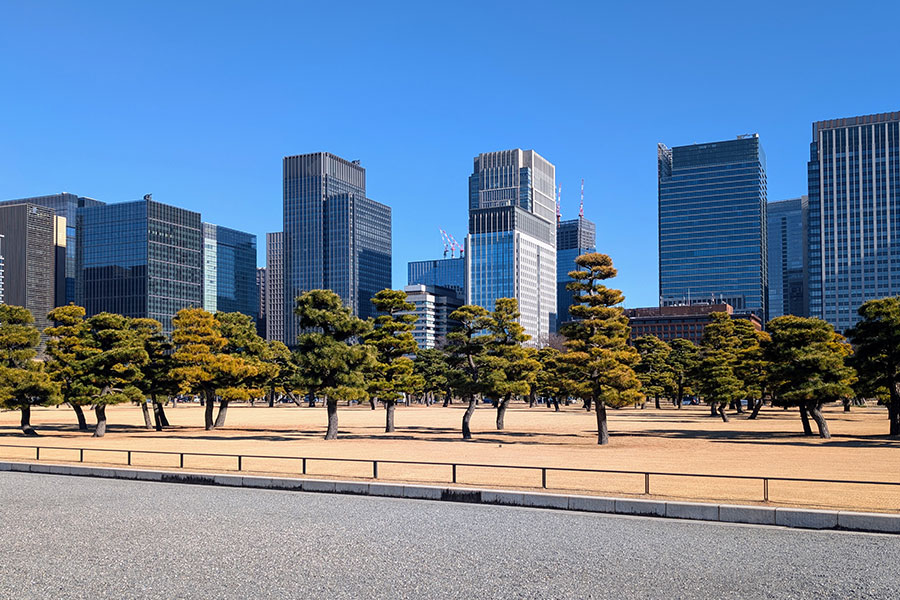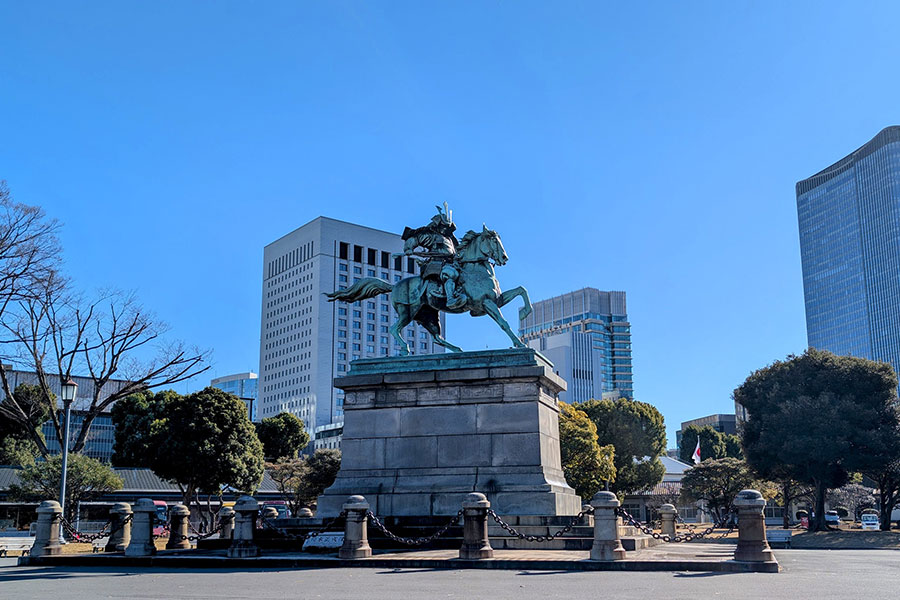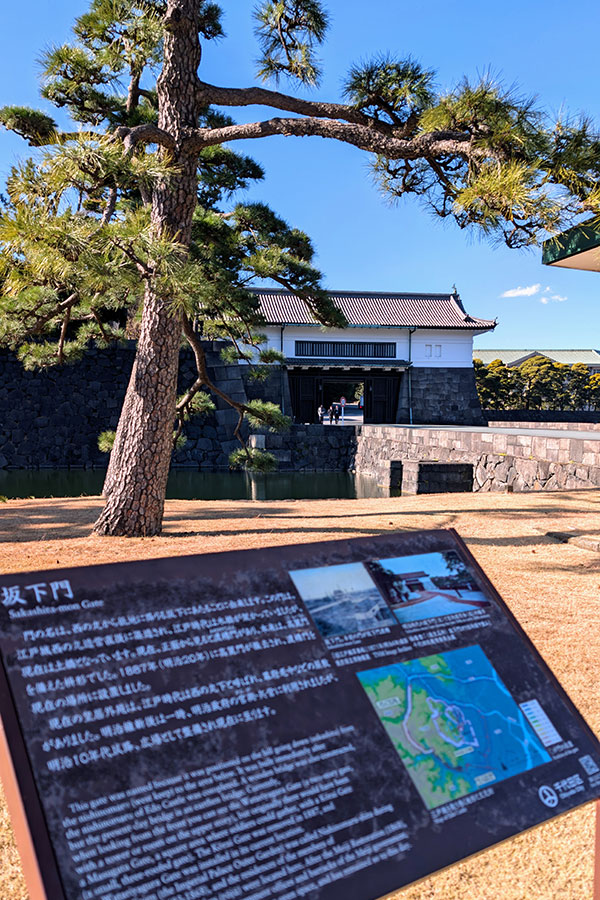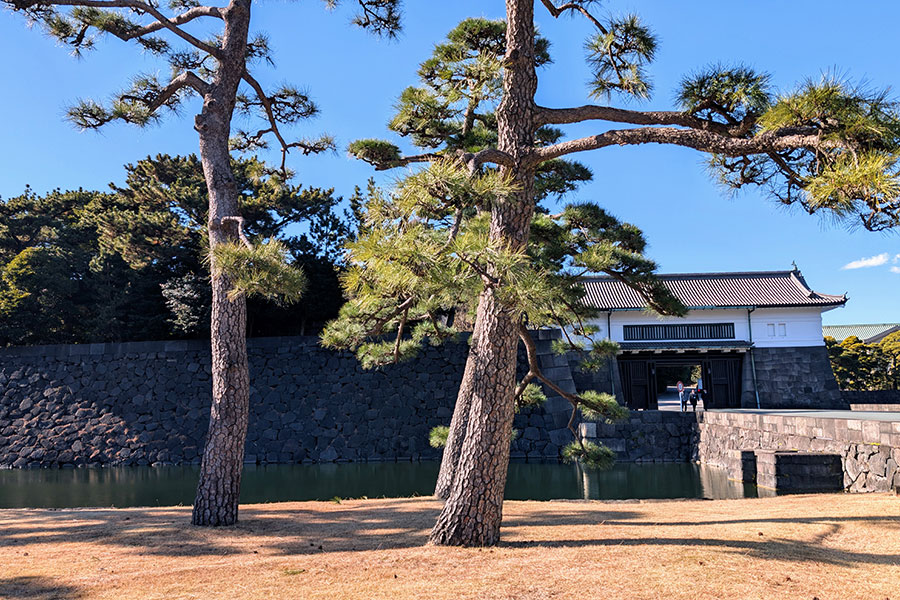Since the late 19th century, the Tokyo Imperial Palace (皇居) has been the residence of the emperor, first at Edo Castle and then at the Imperial Palace. Situated in the heart of Tokyo, the palace complex is unmistakable, surrounded by imposing moats, thick stone walls, and manicured gardens.
The heart of Japan’s politics and culture, not to mention the home of the sitting emperor, a visit to the Tokyo Imperial Palace is a must for visitors. But as it is where the emperor undertakes many of his official duties, there are limits on access to the site.
This guide will help plan a visit to the Imperial Palace and set expectations.
Visiting the Tokyo Imperial Palace: Key Info
- Location: Chiyoda City, Tokyo, Japan
- Cost: Free for both grounds tours and gardens.
- Tour Reservations: Required for inner grounds tours and can be made online.
- East Garden Hours: Opens at 9 am; closing varies from 4-6 pm. Closed Mon/Fri.
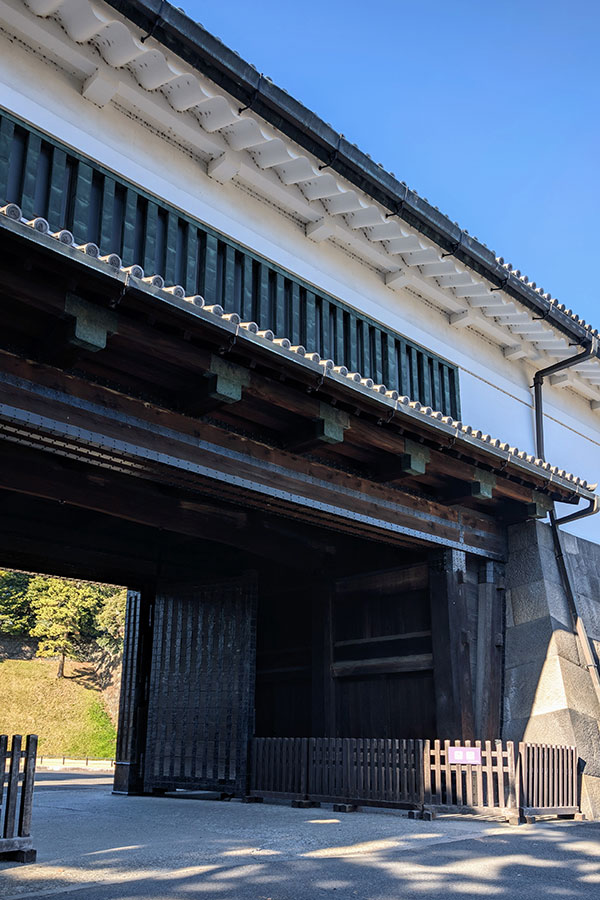
Can You Visit the Tokyo Imperial Palace?
Yes, you can visit the palace, but the answer is a bit more complicated. You can visit the palace’s inner grounds, but access is limited because the Tokyo Imperial Palace is the residence of the Emperor.
Tours of the Inner Grounds
One way to visit is with a guided tour. The guided walking tour lasts about an hour and covers nearly a mile and a half. The tour does not go inside any buildings, but allows visitors to see the exterior of buildings that are otherwise out of sight of the public.
How to Get Tokyo Imperial Palace Tickets
To book a Tokyo Imperial Palace Tour, head to the palace’s website. There you can apply for an Imperial Palace Tokyo tour reservation. Typically, there are two tours daily: one in the morning and one in the afternoon.
Tickets are free and available on a first-come, first-served basis. They are available starting on the first day of the month before the desired date, and you can register until four days before the tour. Tours are typically not offered on Sundays or Mondays, but the schedule does vary seasonally.
Alternatively, you can register for tickets via telephone. Walk-in tickets are also an option; any available tickets are distributed an hour before the tour.
Be sure to bring identification, such as a passport.
Special Events at the Imperial Palace
The other way to visit the inner grounds is for the New Year’s Greeting (January 2) or the Emperor’s Birthday (February 23), when the grounds are opened and the royal family makes an appearance on a palace balcony. However, neither the tour nor the special days allows visitors to go inside the Imperial Palace Tokyo.
The sprawling park surrounding the palace complex is open to visitors and allows you to explore things like the moat, the impressive stone walls, and the stunning bridges.
History of the Imperial Palace
Edo Castle, now known as Tokyo, was built in 1457 and served as the residence of the Tokugawa shogun and a military headquarters from 1603 to 1867. In 1868, the Japanese capital was moved from Kyoto to Tokyo as part of the Meiji Restoration and the resignation of the shogun. The Emperor took up residence in Edo Castle, leaving behind the Kyoto Imperial Palace, which had been the seat of the Imperial power for centuries..
Over the next several decades, the complex was changed. Some of the buildings around the castle were removed or demolished due to fire or earthquakes. Among them was Edo Castle, destroyed in a fire. Instead, in 1888, the new Imperial Palace Castle (宮城 or Kyujo) was constructed on the same site as the former castle. Wooden bridges were replaced with stone and iron bridges, and new buildings incorporated a blend of Japanese and European architectural styles.
During World War II, the palace was targeted by Allied air raids and suffered major damage. In the 1960s, the complex, now known as the Imperial Residence, was reconstructed and the property’s East Gardens were opened as a park.
Visiting the Imperial Palace East Garden (東御苑)
Originally part of the palace grounds during the Tokugawa shogunate, in 1961, the area became the Imperial Palace East Gardens (東御苑). The 52-acre gardens officially opened to the public in 1968.
The park is divided into three sections based on the old Edo Castle: Honmaru, Ninomaru, and Sannomaru.
In the Honmaru section, you can see:
- the remains of Edo Castle’s foundation
- a couple of guard stations
The Ninomaru section features:
- a renewed wood grove
- a garden with trees from each prefecture of Japan
- carp-filled ponds
- additional infrastructure ruins
The seasonal gardens feature some showstopping plants: plum trees bloom in late December through February, and an iris garden hits its peak in late May through mid June. While the gardens are beautiful all year round, they offer a unique sense of tranquility in the colder months. There are many benefits of visiting Japan in winter, including fewer crowds and crisp, clear skies, making it a wonderful time to explore the palace grounds.
The Sannomaru area is home to the Museum of the Imperial Collections.
Entry to the East Gardens of the Imperial Palace is free. The park is typically closed on Mondays and Fridays, unless there is a national holiday. It’s also closed at the end of the year.
The park opens at 9 am daily. Closing time varies throughout the year between 4 and 6 pm.
Kokyo Gaien National Garden
Southeast of the palace, the outer ring of gardens is known as Kokyo Gaien National Garden. At over 100 acres of largely flat area, it features wide walkways lined with around 2000 carefully trimmed Japanese black pine trees and twelve moats. Remarkably, in the 16th century, the area was an inlet for the Edo Bay.
Particularly picturesque is the Nijubashi Double Bridge, an iron bridge over a moat, with a watchtower in the background. The Main Gate Stonebridge is nearby.
The Sakuradamon Gate, the largest remaining gate from the Edo Castle period, where in 1860 a feudal lord was assassinated by a ronin samurai. The stones of the gate are carefully cut and assembled as the gate’s construction uses no mortar.
Practical Information for Visitors
Getting to the Imperial Palace Tokyo
The Tokyo Imperial Palace is in the heart of Tokyo. Because the imperial palace park in Tokyo is so centrally located, multiple train lines are convenient.
- Tokyo Station’s Marunouchi exits put you on the correct side of the station and only a couple of blocks from the palace’s outermost gardens
- Nijubashimae Station on the Chiyoda Line is nearby, stopping along the outer moats of the gardens
- Otemachi Station also stops roughly a block from the palace park and connects multiple train lines (Chiyoda Line, Hanzomon Line, Marunouchi Line, Mita Line, Romancecar, Tozai Line)
There’s no dedicated parking lot for the palace, so using public transit is recommended.
Tips for Planning Your Visit
In general, visiting popular tourist attractions in Tokyo in the morning on weekdays is always recommended. The palace’s sprawling parks and the inability to enter the palaces mean crowds typically aren’t too large aside from during tours.
For photographers, there are lots of beautiful shots combining the historic architecture and the landscaping.
Because the grounds are home to the Emperor, you can expect heavier security than in some other tourist spots. As always, being respectful and following local etiquette is important.
Frequently Asked Questions (FAQ)
Can you go inside the Tokyo Imperial Palace?
No, general visitors cannot go inside any of the buildings. Guided tours of the inner grounds allow you to see the exteriors of several palace buildings, and on two special occasions per year, the royal family appears on a balcony.
Is the Tokyo Imperial Palace free to visit?
Yes, visiting the palace grounds is completely free. Both the guided tours of the inner grounds and admission to the Imperial Palace East Gardens are free of charge.
Do you need a reservation to visit the Tokyo Imperial Palace?
You only need a reservation for the free guided tour of the palace’s inner grounds. The Imperial Palace East Gardens and the outer Kokyo Gaien National Garden are open to the public without reservations.
What are the opening hours for the Imperial Palace East Garden?
The East Garden opens daily at 9 am. The closing time varies by season, ranging from 4 pm to 6 pm. The gardens are typically closed on Mondays, Fridays, and during the year-end holidays.
How do you get tickets for the Tokyo Imperial Palace tour?
Free tour tickets can be reserved online via the Imperial Household Agency’s website, and reservations open on the first day of the month before your desired date. A limited number of walk-in tickets may also be available an hour before the tour begins.
Conclusion
While the Tokyo Imperial Palace can be slightly overwhelming if you’re expecting to see a luxurious castle, a visit to the grounds is a great way to embrace Japanese history, culture, and the great outdoors all while in central Tokyo.
If you’re curious to see just what lies behind the walls, consider taking a free tour or visiting for the Emperor’s Greeting. (Just be sure to plan ahead and get a reservation!)
Whether you wander the East Gardens or reserve a tour, the Tokyo Imperial Palace (皇居) is a must-see for visitors to Japan’s capital.
Have you visited the palace? I’d love to hear about your experience in the comments below!
All photos and opinions are my own.
